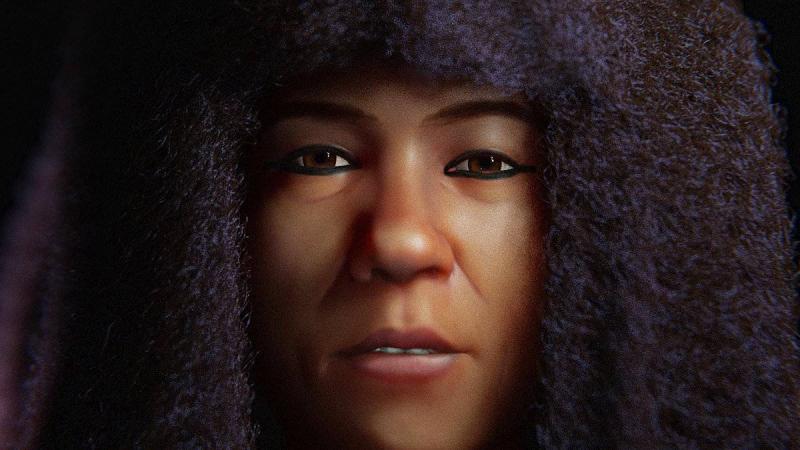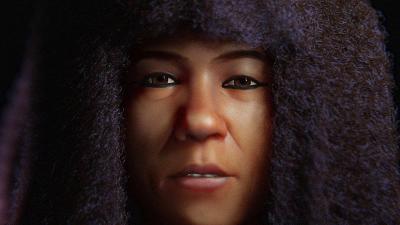A team of scientists has reconstructed the face of a mysterious mummy known as the "Golden Lady," named for her golden headdress. She lived in Egypt and died in her forties, possibly due to tuberculosis. The mummy, which bore no hieroglyphs revealing her name, was first examined using CT scans in 2011 to uncover new details about the body. Now, her true face has been revealed more than 1,500 years after her death, showcasing her "delicate" features when she was alive.
The lead author of the new study, Cicero Moraes, stated that the facial reconstruction was aided by the mummy's careful preservation. He noted, "The structure is very well preserved in its original state as discovered, without unwrapping the mummy. What stands out is the presence of curly short hair, which can be seen in the CT reconstruction. Initially, we reconstructed the skull based on the CT imaging and later adjusted the jaw position. The skull allows us to design features such as the nose, ears, eye placement, and lip borders, among others, using measurements taken from CT scans of living individuals."
Given her origins in Roman-occupied Egypt, tissue thickness data from contemporary European women aged 40 to 49 was utilized. The resulting face was blended with another face created using a process called anatomical distortion. Moraes explained, "This is where we modify the face and skull of a virtual donor to fit the parameters of the Golden Lady, resulting in a structurally compatible face. In the end, we review all the data and adjust the expectations to create the final face."
It is noteworthy that the remains are now preserved at the Field Museum in Chicago. The study was published in Anthropology – the International Journal of Human Diversity and Evolution.




